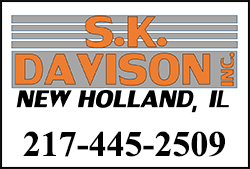 Missing
piece of Britain's ancient Stonehenge returned after 60
years Missing
piece of Britain's ancient Stonehenge returned after 60
years
 Send a link to a friend
Send a link to a friend
[May 08, 2019]
LONDON (Reuters) - A piece of stone drilled
from Stonehenge, a mysterious circle of ancient stones
in southern England, has been returned to the site 60
years after being removed during archaeological
excavations, English Heritage said on Wednesday.
|
|
 The cylinder, which is 1.08 meters long and has a diameter of 25
millimeters, was taken from one of the monoliths in 1958 when
the cracked stone was strengthened with metal rods. The cylinder, which is 1.08 meters long and has a diameter of 25
millimeters, was taken from one of the monoliths in 1958 when
the cracked stone was strengthened with metal rods.
Robert Phillips, an employee of the diamond cutting firm Van
Moppes which carried out the work, kept the extracted stone core
and later took it to the United States when he emigrated there,
English Heritage said.
Last year, on the eve of his 90th birthday, Phillips asked that
the fragment be returned to the care of English Heritage, a
conservation charity which looks after the ancient stones.

"The last thing we ever expected was to get a call from someone
in America telling us they had a piece of Stonehenge," said
Heather Sebire, English Heritage's curator for Stonehenge.
English Heritage said the missing piece, incongruously pristine
amid the weathered stone from where it came, could now help
determine the origin of the stone.
"Studying the Stonehenge core's 'DNA' could tell us more about
where those enormous sarsen stones originated," she said.
Radiocarbon dating shows that Stonehenge, a ring of about
4-metre-high standing stones in Wiltshire, southern England, was
constructed 4,000-5,000 years ago.
[to top of second column] |

There is no definitive answer as to why it was built or what purpose
it served, though theories suggest it could have been a religious
site or an astronomical observatory.
Thousands of pagans, druids and revelers still gather at the site to
see the sun rise on the summer and winter solstices each year.
Stonehenge's smaller bluestones were brought from the Preseli Hills
in south-west Wales but the precise origin of the much larger
sarsens is unknown.
A British Academy and Leverhulme Trust project, led by professor
David Nash of the University of Brighton, is investigating the
chemical composition of the sarsen stones in order to pinpoint their
source, English Heritage said.
They believe the rediscovered core presents a unique opportunity to
analyze the unweathered interior of a stone.
(Reporting by Paul Sandle; editing by Elisabeth O'Leary and Gareth
Jones)
[© 2019 Thomson Reuters. All rights
reserved.] Copyright 2019 Reuters. All rights reserved. This material may not be published,
broadcast, rewritten or redistributed.
Thompson Reuters is solely responsible for this content.
 |